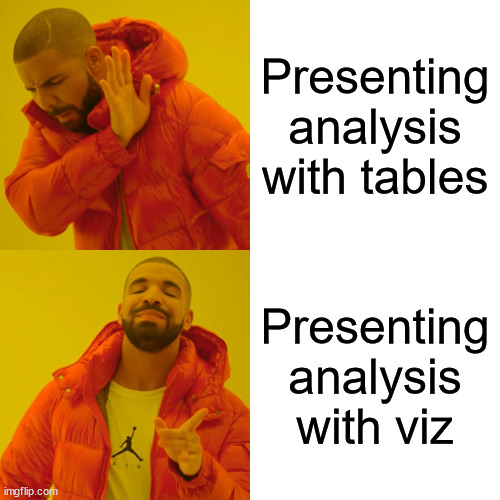Announcements and prelims¶
Peer review, assignment 1¶
Great averages so far:
- Python exercises: 87%
- Markdown: 81%
- Gitignore: 76%
- Reproducibility: 79%
Wednesday: A1 grades posted, A2 due BEFORE class, go over A2 in class
Peer review comments¶
Awesome feedback!
1
In if statement, when there is no alternative action needed, maybe there is no need to include "else: pass"
2
I enjoyed reading this code because it was very simple to follow and efficient. Nothing seemed unnecessary and the thought process/logic was clear. Something that I learned was how you accomplished Q7. I struggled with this a bit and it was great to learn how you did it. Nesting for loops seems like the most clear way to do this and now that I have seen it work in action I completely understand why it works.
EDA hacks¶
- Ad-hoc, fast:
eda.py - Thorough, slow: Pandas-profiling
- Maybe: use when you get new data, and when you think you're done with cleaning / about to start analysis
- You still need to be able to use and run EDA code manually (
df.describe()) ... much faster
In other words¶
The ability to plot large datasets is both powerful and exciting
Data viz discussion¶
(Take notes during this period)
Important: Data viz (and analysis) is iterative: you learn what's worth looking at only as you go
Overlaps with our ABCD rule: PLOT A LOT! A LOT! A LOT!
Plot¶
("sns" means the "seaborn" package)
- To explore data, discover trends/comps/relationship, present results
- To find relationships that differ by groups
- To understand data issues
- B/c summary stats only
describepart of distribution- Leverage (
td_a) has a mean of 0.24 and std 0.38
- Leverage (
Reasonable things to explore via plot¶
Read Chapter 3.3 for much more discussion of plotting (the whys and the hows)
- Explore variation within variables (distributions)
- Explore covariation between variables
- Explore how distributions depends on groups
- Explore how covariation depends on groups
Plotting process¶
| # | Step | Note |
|---|---|---|
| 0 | Ask a question about the data | Ex: What is the distribution of unemployment in each state? |
| 1 | Q > What the plot should look like. Draw it! | Draw it on paper! |
| 2 | Plot appearance > which plot function/options to use | Find a pd or sns plot example that looks like that. |
| 3 | The function dictates how data should be formatted before you call the plot | Key: Wide or tall? |

